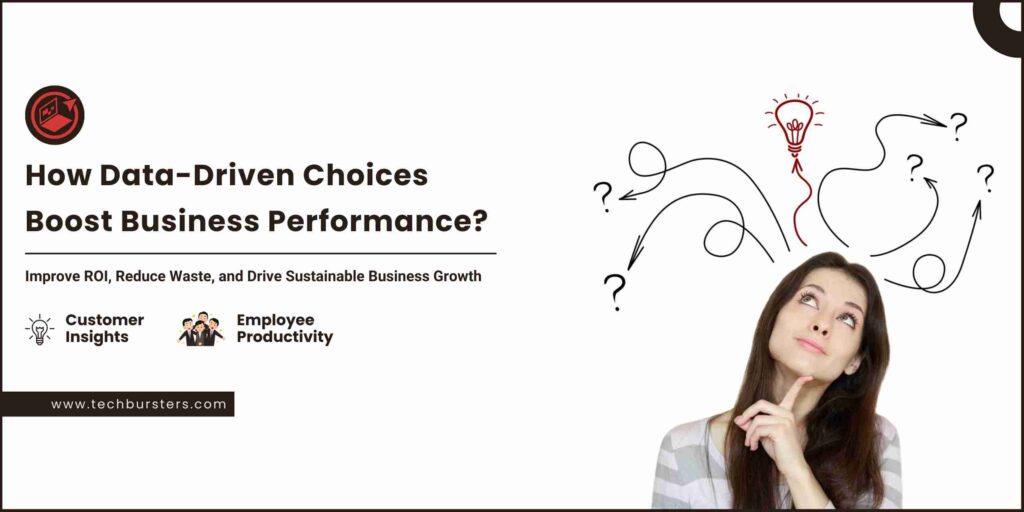
The success of any business is built on a steady stream of well-made, timely decisions. Smart decisions are now guided by analysis of data rather than instinct or experience alone. When data, technology, and judgment are used together, decision intelligence is ensured to guide and improve results.
How does using smarter ways of doing things change your profits? It is good to say that using data is not a short-lived trend; it is a real way to grow profits. Companies get clarity, do not guess, and make choices that help them grow and make money by looking at real numbers.
The Link Between Smart Decisions and ROI
Return on investment (ROI) captures how much profit a business generates from every rupee or dollar. By relying on solid evidence and leveraging decision intelligence rather than hunches, processes become more efficient, waste is reduced to zero, and resources are allocated with precision. In essence, data and decision intelligence keep leaders at the forefront of issues that truly move the needle.
Research backs this up. According to a well-known McKinsey study, organisations that use data to guide their strategy are 23 times more likely to attract new customers and six times less likely than those that base their decisions solely on intuition, which benefits the bottom line.
Data-Driven Strategies That Drive ROI
What defines a smart, data-driven choice? Here are some essential ways businesses ensure their decisions are supported by accurate data:
1. Customer Insights
Knowing how customers act and what they want can make your products, your work, and your ads better. This is how companies use customer data to get more sales and keep customers for much longer. Additionally, data-driven marketing tactics have been demonstrated to yield 5-8 times higher returns on investment than conventional marketing techniques, according to HubSpot.
2. Increased Operational Efficiency
Smart planning generally helps operations operate better, use less money, and make things easier for employees. Businesses can identify operational shortcomings and fix them to become more efficient if they have data. By the use of predictive analytics, companies can predict what goods consumers will order and arrange production accordingly.
3. Employee Productivity
Using technology to evaluate employee performance can make team management decisions more effective. Companies use this knowledge to make changes that boost productivity. Companies that depend on data usually see their employees become 30% more engaged and productive as a result.
4. Market Trends
Making smart business choices is often possible when you anticipate future trends. When businesses rely on data, they can choose how to grow and address challenges more effectively. Using data insights, businesses can quickly update their actions and outpace their competitors in adapting to new preferences.
Real-World Examples of Smart Decisions Driving ROI
1. Retail Optimization Case Study
A leading global retailer made a significant change and began using AI to optimize its inventory. The company was able to cut overstock by 18% and also avoided losing 12% of its sales. The overall outcome is… An increase of 9% in total revenue for a single fiscal year.
2. Case Study: Manufacturing Efficiency
A mid-sized manufacturing firm adopted the use of machine learning algorithms for forecasting necessary maintenance. Decisions were made using live data from the equipment, instead of working to a fixed timetable. Cutting downtime by 25% resulted in annual savings of more than $750,000 in operating costs.
Key Components That Drive ROI Through Smart Decisions
1. Data Quality and Integration
Wise choices rely on good, well-organized data from multiple sources. Clumps and bad data can hurt how we make choices.
2. Advanced Analytics and AI Tools
Innovative computer programs, how we communicate, and predictive modeling are necessary to discover what is new and provide us with ways to improve.
3. Agile Decision Frameworks
Wise choices can change as more information becomes available. Groups win when they can try, learn, and act fast to new things.
4. Organizational Alignment
When departments share objectives, KPIs, and insights, intelligent decision-making becomes more effective. Data leads to action thanks to alignment.
The Risks of Relying on Data Alone
Data can help inform decision-making; however, it is certainly not foolproof. Devoid of consideration for the human factor and with scant regard for the broader market context, data alone will lead to poor decisions being made. Data should be used as an input to decisions, not as a mere substitute for human judgment. Furthermore, not all data is equal; businesses must ensure that the information they use to make decisions is accurate, current, relevant, and reliable.
The Smart Investment in Data
With the power of data being leveraged, companies are producing better work, achieving better results, and ensuring long-term growth.
Using data can help a company excel at what it does, adapt to market changes, and take calculated risks. Aera technology makes this happen by giving teams the power to turn what they see now into things they can do, to make the change happen. Do you want to achieve a higher ROI with smarter choices? Aera Technology is your way to use data to get better results.
